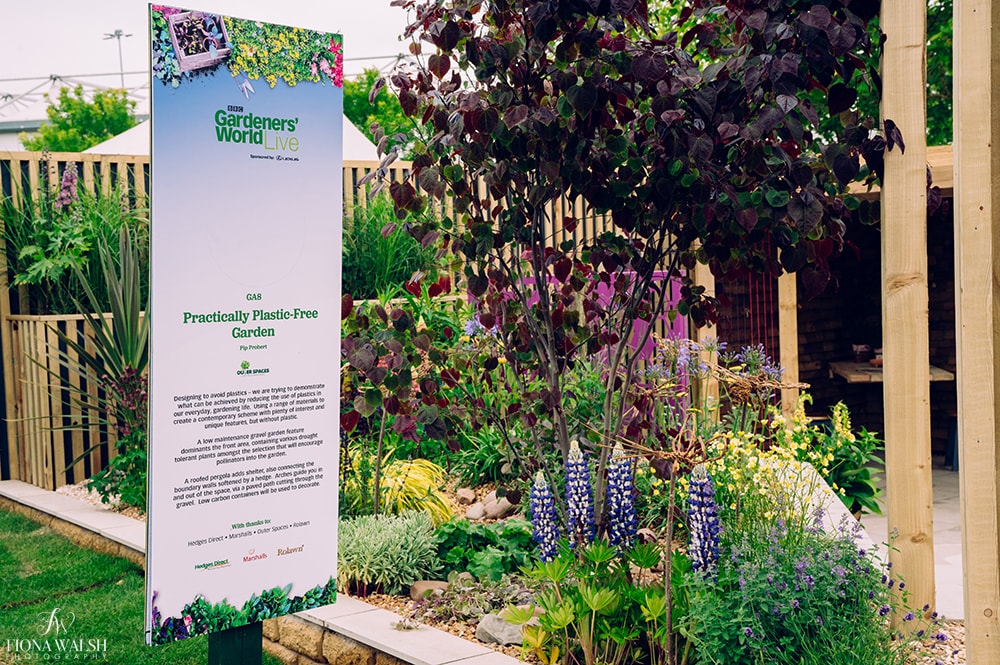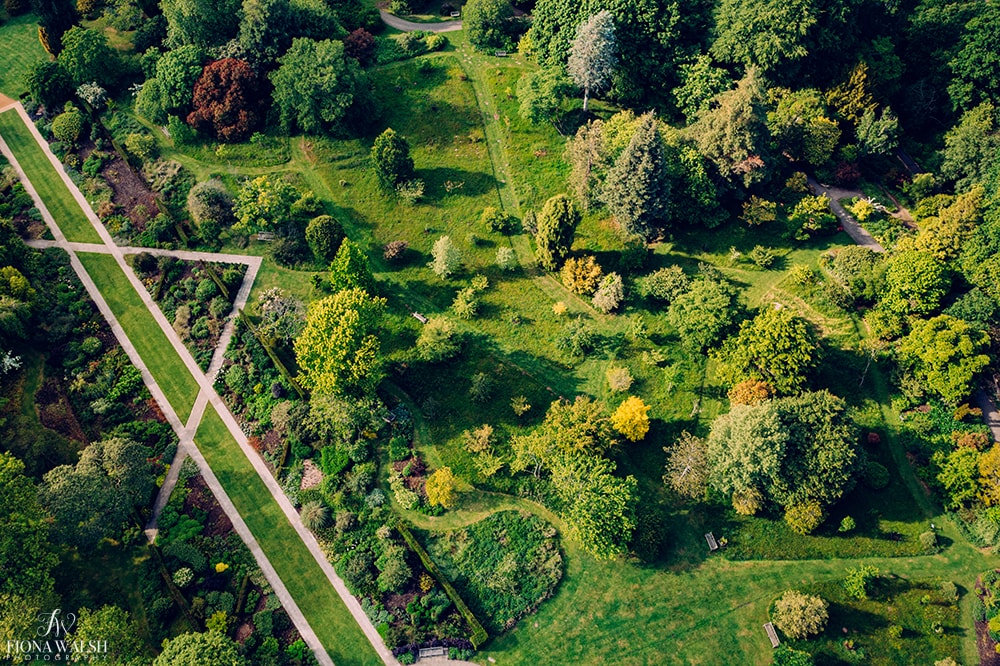GARDEN PHOTOGRAPHER TALKS TO GARDEN DESIGNER PIP PROBERT
You may have seen her on the BBC with Your Garden Made Perfect, garden designer Pip Probert showcased a garden at the BBC Gardeners’ World Live show. I caught up with Pip about her show garden – ‘Practically Plastic Free’. This show garden makes it her 39th! Her 40th garden is on display next week at RHS Tatton Park (designs below). Having displayed gardens at many RHS shows over the years, she’s gained many awards.

“The inspiration behind this garden is the need to reduce plastics – we are trying to demonstrate what can be achieved by reducing the use of plastics. A low maintenance gravel garden feature dominates the front area, containing various drought tolerant plants that will encourage pollinators. A roofed pergola adds shelter, also connecting the boundary walls softened by a hedge”.

“What does it take to create a show garden?”
“I try to create a garden that is mostly functional, practical and that the average person can imagine themselves using. I want the public to relate to it – not too much planting, but enough to feel as though they are out in the garden. Not too fussy with ’twiddly’ bits, so that it doesn’t overly push into any particular theme. Plus, I love a colour scheme, specially on a show garden. It feels as though it draws people in and feels finished.
I am generally self funded but with a series of product sponsors – this way, everybody involved has minimal expense and only has to deal with their own product. I then have the job of pricing everything together and making it work. Paperwork is a constant thing, with plenty of form filling, and boxes to tick.
Once we are on site, we start the best bit – the BUILD! It is always a process of ups and downs, time restrictions and weather. The camaraderie is brilliant and not just with your own team, but the other exhibitors too. As a Show Garden exhibitor, we are the first to arrive and the last to leave. A village is being built around you, and ’show people’ generally travel around to most events, so the faces are the same, making it a very friendly environment to work in”.

What lessons have you learned after doing 39 gardens?
“When I first began exhibiting I was 20 years old, very fresh faced with no experience. I tried to absorb every piece of advice and experience I could from those around me, hanging on every world of the judges and show teams. Over the years I feel as though I have learnt a lot, but also changed in my outlook. To begin with I wanted to make a name for myself and demonstrate my designs to the visitors. Over time this developed into creating things that I hoped would stand out form the crowd.
As my business began to grow, I changed tactics a little – now I try to design a garden that people could imagine in their own home. Still with colour and some unique ideas, but for me it has to be practical, affordable, and achievable for the majority of people. Back in the day I did put a lot of pressure on myself to achieve the best medal possible, but these days I feel as though the public make the final decision.
We still aim to achieve the best we can, nothing has changed there, but I realise that we are generally working on a lower budget than some of the sponsored gardens. So I feel we are more relatable to the public than possibly the judges who are each looking for different things. If the public like the gardens I create, then I am very happy!”



What happens to the garden after the show?
”We try to re-use as much as possible after the show garden has been broken down. On occasions, someone will buy the garden outright and we can simply dismantle and re-build in a new position. But generally we need to be prepared for breakdown before we even arrive at the show. Therefore all the components of the garden have generally been sold or a home has been found for them in advance.
Most items can be re-used, paving, wood, plants etc, but there are a few things that simply can’t be, such as the mortar and hardcore – this is something that is gathered up and put into skips/grabs. But the show teams try to separate the waste the best they can, and the used hardcore can eventually be used again as there are companies that recycle rubble to create different grades of hardcore (possibly not used for the same purpose, but re-used in an other way)”.

Is it hard to be accepted into a show?
Not really. If you have no experience of taking part in a show garden then obviously it would difficult to get accepted into Chelsea first time round. But there are lots of smaller categories you can get involved in first, and see if you like the experience. Some people even volunteer, and work with the teams to gain experience first. Gardeners’ World Live have the Show Borders, Tatton has the Community Gardens and Back to Backs – these are slightly smaller, but still a challenge and the same experience as the show gardens, just on a slightly smaller scale (less cost for a first timer and slightly less time on site)”.




How do you fund a show garden?
You really need to be organised! Generally, designers are looking for sponsorship well in advance, possibly 1-2 years. That way, they can visit a show with a potential sponsor to allow them to see what it is really like. They can get a sense of the amount people visiting the show, the atmosphere and general excitement around the whole experience. If you are self funding like I tend to do, we look at bringing in product sponsors. This way there is less risk for them, as they simply have to provide their product and you as the designer or landscaper need to fit it.
Pip’s illustrations:


Pip Probert is also showcasing a garden at The RHS Flower Show Tatton Park, 20 – 24 July, with her garden “Why Commute?”. Pip says, “it’s designed for people working from home, trying to split the garden into family areas and a meeting/work space when necessary”.



Offering garden photographing, including using the drone.
Love to hear from you! Click here or email fiona@fionawalsh.co.uk


